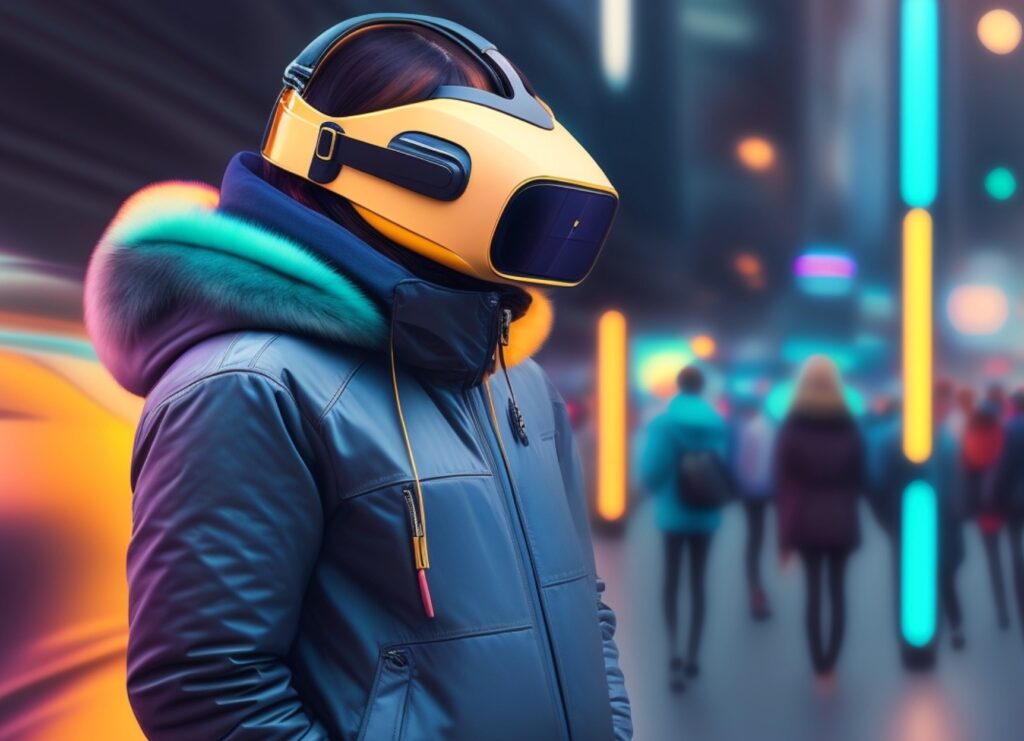AIGC Metaverse
What is an AI-Generated (AIGC) Metaverse?
An AIGC metaverse is a virtual world that is created using artificial intelligence technology. It is a digital space that can be accessed by users from anywhere in the world, and it can be used for a variety of purposes, such as gaming, education, and social interaction. The AI technology used to create these virtual worlds allows for a more immersive and interactive experience for users, as the environment can adapt and respond to their actions in real-time. This technology also allows for the creation of more complex and realistic virtual worlds, with advanced graphics and physics simulations. The potential applications of AI-generated metaverse technology are vast, and it is an exciting area of development in the field of virtual reality and artificial intelligence.
Some companies, such as Apple (with its Apple Pro Vision) and Meta (Meta Quest), have already looked into the matter and are already offering virtual reality headsets that could potentially be compatible with AIGC metavers in the near future.
The Advantages of Using AI for Virtual World Creation
Using AI technology to create virtual worlds has several advantages over traditional methods. One of the main benefits is the ability to create more complex and realistic environments, with advanced physics simulations and graphics. This allows for a more immersive and interactive experience for users, as they can explore and interact with the virtual world in a more natural and intuitive way. Additionally, AI-generated virtual worlds can adapt and respond to user actions in real-time, creating a more dynamic and engaging experience. Another advantage of using AI for virtual world creation is the ability to automate certain tasks, such as object placement and terrain generation, which can save time and resources. Overall, the use of AI technology in virtual world creation has the potential to revolutionize the field, creating more realistic and engaging experiences for users.

Applications of AIGC Metaverse Technology
The potential applications of AI-generated metaverse technology are vast and varied. One of the most obvious applications is in the gaming industry, where AI-generated virtual worlds can create more immersive and engaging gaming experiences. These virtual worlds can be used for a variety of game genres, from first-person shooters to role-playing games, and can offer a more dynamic and interactive environment for players.
Another potential application of AIGC metaverse technology is in education. Virtual worlds can be used to create immersive and interactive learning environments, allowing students to explore and interact with complex concepts in a more engaging way. This technology can also be used to create simulations for training purposes, such as flight simulators for pilots or medical simulations for doctors.
AI-generated metaverse technology can also be used for social interaction, creating virtual spaces where people can meet and interact with each other in a more immersive and engaging way. This technology can be used for virtual conferences, social events, and even dating.
The potential applications of AIGC metaverse technology are vast and varied, and it is an exciting area of development in the field of virtual reality and artificial intelligence.
The Challenges of Creating an AI-Generated Metaverse
While the potential benefits of using AI technology to create virtual worlds are vast, there are also several challenges that must be addressed. One of the main challenges is the complexity of the technology itself. Creating an AI-generated metaverse requires a deep understanding of artificial intelligence, machine learning, and 3D modeling, which can be difficult to master.
Another challenge is the need for large amounts of data to train the AI algorithms. Creating a realistic and engaging virtual world requires a vast amount of data, including textures, models, and physics simulations. This data must be collected and processed in a way that allows the AI algorithms to learn and adapt to the environment.
Another challenge is the need for powerful computing resources. Creating an AI-generated metaverse requires a significant amount of computing power, which can be expensive and difficult to obtain. Additionally, the technology is still in its early stages, and there are few tools and frameworks available to help developers create these virtual worlds.
Finally, there are ethical and social challenges associated with the use of AI-generated metaverse technology. As with any new technology, there are concerns about privacy, security, and the potential for misuse. Developers must be mindful of these issues and work to address them as they create new virtual worlds.
Overall, while the challenges of creating an AI-generated metaverse are significant, the potential benefits are vast. With continued development and innovation, this technology has the potential to revolutionize the field of virtual reality and artificial intelligence.

Examples of AIGC Metaverse Projects
There are already several examples of AIGC metaverse projects in development or already released. One of the most well-known is the game No Man’s Sky, which uses procedural generation and AI algorithms to create a vast and diverse universe for players to explore. Another example is the virtual world platform Second Life, which has been around since 2003 and allows users to create and interact with their own virtual environments.
More recently, the game Dreams on PlayStation 4 has gained attention for its use of AI-generated content. The game allows players to create their own games, music, and art using a variety of tools, and the AI algorithms can assist with tasks such as object placement and terrain generation.
In the education sector, the virtual reality platform Engage has been used to create immersive learning environments for students. The platform allows educators to create their own virtual classrooms and simulations, and the AI algorithms can adapt the environment based on student actions and feedback.
These examples demonstrate the potential of AIGC metaverse technology in a variety of industries and applications. As the technology continues to develop, we can expect to see even more innovative and engaging virtual worlds created using AI algorithms and machine learning.

How to Get Started with AIGC Metaverse Creation
If you’re interested in getting started with AI-generated metaverse creation, there are several steps you can take. First, it’s important to gain a solid understanding of the basics of artificial intelligence, machine learning, and 3D modeling. This can be done through online tutorials and courses, as well as by reading books and articles on the subject.
Getting started with AI-generated metaverse creation can be a daunting task, but there are several resources available to help developers and enthusiasts get started. One of the best places to start is with online tutorials and courses, which can provide a solid foundation in the basics of artificial intelligence, machine learning, and 3D modeling.
Another important step is to join online communities and forums dedicated to AIGC metaverse creation. These communities provide a space for developers to share ideas, collaborate on projects, and get feedback on their work. They can also be a great source of inspiration and motivation for anyone interested in this exciting area of development.
Once you have a solid foundation in these areas, you can start experimenting with open-source tools and frameworks such as Unity and Unreal Engine. These tools allow you to create virtual worlds using AI algorithms and machine learning, and they provide a great starting point for anyone interested in this field.
Getting started with AI-generated metaverse creation requires dedication, hard work, and a willingness to learn. But with the right resources and a passion for the subject, anyone can contribute to this exciting area of development in the field of virtual reality and artificial intelligence.
Conclusion: The Exciting Potential of AIGC Metaverse Technology
In conclusion, the development of AI-generated metaverse technology has the potential to revolutionize the field of virtual reality and artificial intelligence. The ability to create more complex and realistic virtual worlds, with advanced graphics and physics simulations, allows for a more immersive and interactive experience for users. The potential applications of this technology are vast and varied, from gaming and education to social interaction and beyond. However, there are also significant challenges associated with the development of AIGC metaverse technology, including the complexity of the technology itself, the need for large amounts of data, and ethical and social concerns. Despite these challenges, the potential benefits of this technology are vast, and with continued development and innovation, we can expect to see even more exciting and engaging virtual worlds created using AI algorithms and machine learning.

